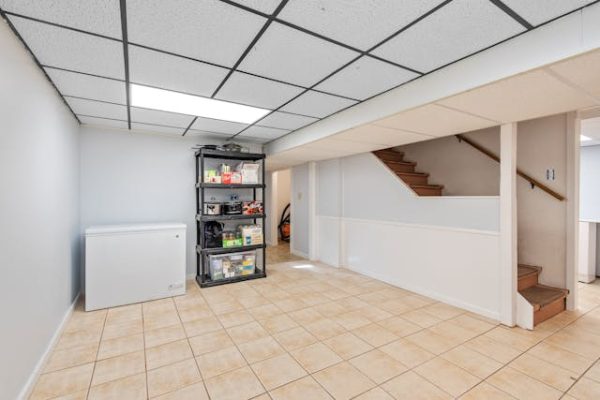Sump pumps might keep water out temporarily, but they’re not complete waterproofing plans. Many homeowners assume that if pumps work, basements are protected until heavy rain or power outages prove otherwise. True waterproofing involves multiple systems working together through drainage, sealing, and soil management.
Relying on a single mechanical fix isn’t enough. Every homeowner should consider a full-coverage approach, like Highland Park basement waterproofing strategies that address every potential weak point.
Single-point protection creates false security. When pumps fail or lose power, homeowners face surprises when discovering inadequate backup systems. Comprehensive waterproofing prevents surprises through redundancy and layered defense. Multiple protection points mean failure of one system doesn’t cascade into basement flooding.
Understanding waterproofing layers reveals why professional systems include components beyond just pumps. That comprehensive approach transforms basement protection from a risky gamble into a reliable defense.
The Limits of Single-Point Systems
Sump pumps remove water only after it enters the basement perimeter. They don’t prevent moisture or hydrostatic pressure from building up initially. Pumps handle water already in basements. They don’t stop water from trying to enter in the first place. That reactive approach means problems are already developed before the pumps activate.
Power outages disable electric pumps, leaving basements unprotected during storms. Battery backup systems provide some protection, but batteries eventually discharge. Water-powered pump backups work without electricity but require water access. Understanding pump limitations prevents overreliance on mechanical systems alone.
Pump maintenance requirements often get neglected, creating false confidence. Dirty intake screens reduce pump effectiveness. Debris clogs discharge lines. Valves stick, preventing proper operation. That maintenance need means pumps only work when regularly serviced. Neglected pumps fail unpredictably when homeowners assume they’re functioning.
The Layers of True Waterproofing
Effective systems combine exterior grading, foundation sealing, and interior drainage channels. Each component supports others, reducing strain on mechanical systems. Proper grading keeps water away from the foundation initially. That prevention reduces pump workload. Interior drain tiles intercept water before it reaches the sump pit. That interception reduces pump demand further.
Foundation sealing prevents water from entering walls through cracks and pores. Sealed foundations keep more water outside. That external prevention reduces internal problems. Sump pumps handle only breakthrough water. That layered approach means pumps rarely need to run hard.
Vapor barriers below floors prevent moisture from rising through concrete. Interior drain systems direct water toward the sump. That combination creates redundant protection. If one system underperforms, others provide backup. That redundancy creates genuine security.
Power Backup and Maintenance Matter
Even the best pumps fail without maintenance or backup power. Battery backup systems keep the protection running during outages. Water-powered pumps work without electricity, providing an alternative backup. Generator systems run all pumps, ensuring protection during extended outages. That backup planning means storms don’t disable basement protection.
Regular maintenance ensures systems function reliably. Pump intake screens need cleaning and removal of debris. Discharge lines need checking to prevent blockages. Sump pits need cleaning and removal of accumulated sediment. That routine maintenance takes minimal time but prevents expensive failures.
Professional inspections verify system functionality and identify maintenance needs. Regular professional inspections catch problems before failures occur. That preventive approach saves money and prevents emergencies.
Local Conditions Demand Custom Solutions
Highland Park’s soil and weather patterns require tailored strategies rather than one-size-fits-all fixes. Clay-heavy soil retains water longer than sandy soil. That retention increases basement pressure. Highland Park’s proximity to Lake Michigan raises water tables. That elevation means water pushes harder from below. Those local factors demand specific system designs addressing Highland Park conditions.
Weather patterns in Highland Park include heavy spring storms and fluctuating freeze-thaw cycles. Those patterns create specific pressure variations. Effective systems anticipate local weather patterns. Generic systems designed elsewhere might underperform locally.
Professional assessment identifies specific vulnerabilities in your Highland Park home. That localized analysis guides appropriate system design. Custom solutions outperform generic approaches by large margins.
Conclusion
Basement protection should never depend on a single device. Investing in comprehensive Highland Park basement waterproofing delivers reliable defense against leaks, power failures, and unpredictable storms. Layered systems with redundancy and backup power create genuine security.
Multiple protection systems working together provide peace of mind. Comprehensive waterproofing prevents emergency situations before they develop. That proactive protection proves far less expensive than reactive repairs after damage occurs.
Deploy a comprehensive waterproofing strategy addressing all vulnerability points in your basement. That investment protects your largest asset, ensuring dry basements through all weather conditions.


